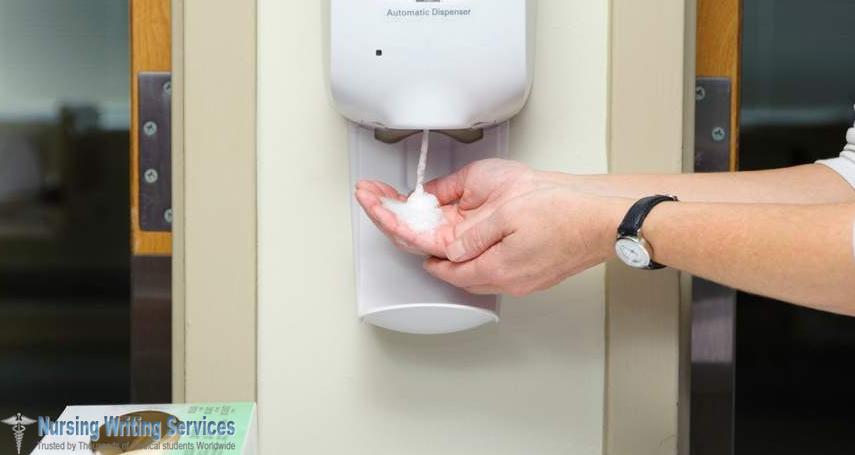
antibacterial soap and antibiotic resistance
Superbug is a term that describes the strains bacteria that resist the majority of antibiotics in extensive use. Resistant bacteria can cause pneumonia, skin infections and tract infections are just some of the dangers that superbugs cause.
Antibiotic resistance is a phenomenon that occurs naturally that you slow but not stop. Bacteria over time adapt to drugs that should kill them and change to guarantee their survival. It makes the previous standard treatment for a bacterial infection to be less ineffective or useless. Specific actions might accelerate an emergence and spread of antibiotic-resistant bacteria such as:
- Poor prevention of infection and control practices
- Use or misuse of antibiotics
- Mishandling food
- Living or working in unsanitary conditions
Experts recommend washing hands with soap and water or alcohol-based sanitizer as one of the ways to prevent bacterial infection. The need for protection against bacterial infections is a reason why antibacterial cleaning products such as lotions and soaps have been in use. The danger is that antibacterial soaps have a potential to create antibiotic-resistant bacteria building up the resistance of the superbugs.
How Antibacterial Lotions, Soaps and Cleaning Products Create a Superbug
Heavy use of antibiotics causes resistance that generates from s small subset of the bacterial population with a random mutation that allows its survival for chemical exposure. Frequent use if the chemical will kill other bacterial, but this subset will continue to increase. Regular use can make the chemical to become useless against the strain of bacteria if it happens on a broad scale.
It is currently a massive challenge in medicine to extend that world health organization is calling it a threat to global health security. Some bacteria species (mostly MRSA) have adopted resistance to various drugs complicating the efforts for controlling and treating infections while they spread. Health officials say that there is a need for further research before a conclusion that triclosan is the increasing resistance although many studies have been hinting at the possibility.
The concern about superbugs revolves around chemical ingredient called triclosan that is present in most of the antibacterial products. Triclosan is present in much antibacterial soap, cleansers but most hand sanitizers do not include it. Recent studies found that triclosan may alter the functioning of hormones in the body that according to Federal Drug Administration might also contribute to the development of superbugs leading to bacterial resistance to antibiotics. Triclosan is not an essential ingredient for many products and FDA as well as Environments Protection Agency is reviewing it.
Many concerns exist that use of triclosan might increase the risk of generating drug-generating resistant bacteria after documentation that bacteria that usually stays on the skin can also become resistant to triclosan. Triclosan-resistant bacteria typically have mutations in the proteins called enoyl-acyl carrier protein reductases or ENRs. ENRs are essential for the biosynthesis of cell membranes and also targets for any other clinical antibiotic drugs such as Isoniazid. Continued exposure of bacteria populations to triclosan especially for environmental accumulation makes them develop mutations in their ENRs for them survive exposure.
The significant public health concern is that these ENR mutations can make these bacteria to start resisting other prescription antibiotics. If this is the situation, it might be crucial to limit the use of triclosan to the products where is hugely useful.
How Dangerous Are Antibacterial Lotions, Soaps and Cleaning Products
Antibacterial agents are widely non-toxic when you use them on external surfaces if you appropriate levels of concentrations. The rapid killing effect does not allow the creation of resistant bacteria. Resistance occurs after long-term use of the products at low-level concentrations which is a condition that happens with the use of residue-producing agents such as triclocarban and triclosan.
It was not until recently that it became clear that agents affect a specific process in bacteria. They believe in the past was that it could not allow the emergence of resistant bacteria. Recent lab evidence showed that triclosan inhibits a particular step in forming bacterial lipids in cell wall structure.
Some scientists believe that the laboratory conditions for research study do not represent happenings in the real world. Other studies show that not all antibacterial lotions, soaps and cleaning products have the detectable development of resistance but it is mostly for products that have been in use for a short time.
However, the constant use of these agents disrupts bacteria including the harmless but leaves some residual. A shift in bacterial populations creates space for diseases causing bacteria to enter, establish infection and resist.

